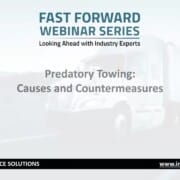Safety Managers’ Relief; The Drug and Alcohol Clearinghouse
The logistics industry is littered with chatter about the FMCSA’s new drug and alcohol clearinghouse. These new federal regulations change the way trucking companies and CDL holders report data. But what exactly is a clearinghouse?
A clearinghouse is an information hub. It is a source that collects and stores information for a set of users. In a project that has taken years to come to fruition, the federal government has is using this structure for the convenience of trucking companies and CDL holders alike.
What is the Drug and Alcohol Clearinghouse?
The new Clearinghouse is a secure online database that contains records of violations of FMCSA drug and alcohol testing programs. Available information includes:
- Positive drug or alcohol test results
- Altered drug or alcohol test results
- Drug or alcohol test refusals
- Return to duty status
- Follow up testing plan
- SAP process completion date
The information in the database is not available to the general public, so don’t worry about your private information being released. Only select registered users can access the clearinghouse including employers, medical review officers, substance abuse professionals, and CDL holders.
Who is required to use the Clearinghouse?
Anyone who holds a Commercial Driver’s License or a Commercial Learner’s Permit can use the clearinghouse to access their records. Employers of CDL/CLP holders who operate motor vehicles can use the information to expedite their hiring process.
Drivers will have access to their own information in the Clearinghouse. There is no charge to view their electronic record. They will be able to view their drug and alcohol program violation information and the status of their return-to-duty process.
Medical Review Officers will use the database to report information gathered during DOT physicals and drug or alcohol tests. MROs must report to the clearinghouse database within two days of a failed or refused drug test.
Substance Abuse Professionals are required to report when a CDL/CLP holder is registered in a SAP program and information about a CDL holder’s return to duty activities. They also must identify the dates regarding SAP assessments, completion, and eligibility to RTD.
How will I use the Clearinghouse?
- REGISTER – Every user must register to use the clearinghouse. Make sure you determine your user role before registration. Your options are Driver, Employer/CTPA, or SAPs/MROs.
- CONSENT – After registration, drivers must consent to having their records pulled by employers. * Drivers are not required to register for the Clearinghouse, records will be filed under their CDL number if they do not have an account. Drivers must be registered to respond to electronic consent requests from prospective and current employees.
- QUERY – Employers will search the database to determine if the driver’s clearinghouse record contains information about drug and alcohol program violations.
- SAFETY – Improve road safety by preventing CMV related fatalities and injuries. Documents and readily available records will allow employers to make informed hiring decisions. Drivers with a drug/alcohol history might find it more difficult to find a job.
How does the clearinghouse improve roadway safety?
The Drug and Alcohol Clearinghouse provides employers with access to drug and alcohol violation information in real-time. It is a one-stop shop, making it easier to conduct pre-employment investigations and set qualifications.
The clearinghouse will also make it harder for drivers to conceal violations that normally might slip through the cracks. Access to the information provides more insight into a driver’s background and helps ensure employee compliance.
The database is a vital online tool to identify CMV drivers who have refused or failed drug tests. It will also identify those who have failed to complete a Return to Duty substance abuse program.
Stay Informed
Browse the FMCSA Drug & Alcohol Clearninghouse website, read FAQs, and subscribe for email updates after you register for the clearinghouse.
Affected Sectors
The new Clearinghouse will impact all CDL holders who operate commercial motor vehicles.
- Interstate and intrastate motor carriers
- Passenger carriers
- School bus drivers
- Construction equipment operators
- Limousine drivers
- Municipal vehicle drivers (e.g. waste management vehicles)
- Anyone subject to FMCSA drug and alcohol tests
Effective Dates
As of January 6, 2020, employers will now be required to report all drug and alcohol violations to the Clearinghouse. This online database will be used as a tool to conduct inquiries about CDL holders, check RTD status, and eligibility to operate a CMV.
The information stored in the Clearinghouse is relevant to incidences occurring after January 6, 2020. If a violation occurred before that date, it will not be displayed in the Clearinghouse. It is important for safety officers to keep that date in mind throughout the recruiting process.
Drivers do not have to be registered to the clearinghouse for a violation to be attached to them. Clearinghouse records will be associated with their CDL number.
All drivers can choose how they want to be notified of changes to their records. They are given the option of mail or email notifications at the time of registration. Drivers will receive a notification any time information is added, removed, or updated.
How do I consent?
Employers are required to gain consent, written or electronically, from all drivers in order to pull their records. They will then use the Clearinghouse to investigate all CDL/CLP drivers annually and for pre-employment purposes.
Owner Operators will follow a slightly different procedure. They must contact the Clearinghouse to designate an administrator to update their records since they are self-employed.
This streamlined process will create a more transparent view of the driver’s drug/alcohol history. More visibility leads to easier recruiting processes for most companies. And drivers gain the advantage of being able to see firsthand what is on their records instead of relying on word of mouth from safety departments and recruiters.











